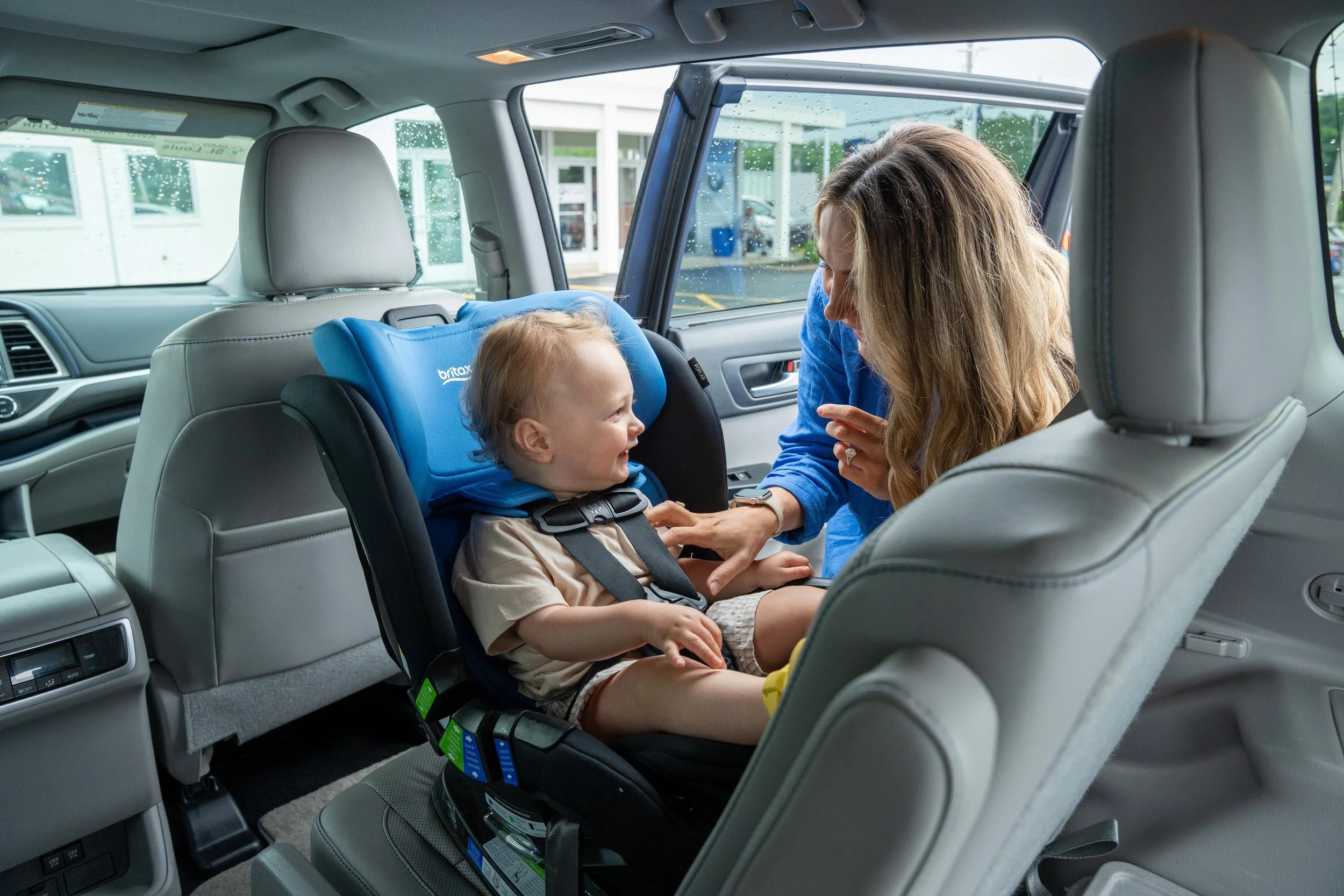Car Seat Load Leg: Does It Work In My Car? | Ask A CPST
I’ve heard car seat load legs are a safety benefit, but is it safe to use in my car?
Hi, I’m Sam! Like Kelly the Car Mom, I’m a Child Passenger Safety Tech (CPST) and a mom of three, soon-to-be-four. Kelly and I are here to familiarize you with car seat safety, use, and selection so you can make the decisions that feel right (and safe) for your family.
Without any further introduction, let’s break down exactly what a car seat load leg is and how it help your child’s safety.
What’s a car seat load leg?
Also called a support leg, stability leg or foot prop, each is a way to describe a safety feature found on infant car seat bases (and a couple convertible car seats.)
In the event of a crash, a load leg distributes crash forces through the car seat and to the floor of the vehicle. This allows for the baby’s head and neck to move much, much less.
A measure of this movement in crash testing is called head injury criteria (HIC.) The lower the HIC, the better the car seat performs. In crash testing a seat using a load leg versus that same seat without a load leg performs significantly better.
Does my kid’s car seat need a load leg?
If your car seat does not have a load leg, there’s absolutely no need to go out and buy a new car seat. Every car seat sold passes stringent safety standards, so it would be completely inaccurate to say a seat without a load leg gets a “C” and a seat with one gets an “A.”
Both seats exceed federal safety standards, but when comparing two identical seats using a load leg and stowing the load leg, it performs better with it.
Which car seats have a load leg?
More seats are becoming available that offer a load leg, but this is still a newer safety feature added to car seats. Don’t forget, any car seat on the market is an 100% safe option for your child to sit in, but if you’re in the market for a car seat with this feature, there are a few to choose from.
Here are our top picks for infant car seats with load leg:
Nuna Pipa RX
Will a car seat load leg work in my car?
It’s true that some vehicles don’t allow car seat load legs to be used. This is typically due to a hollow compartment in the vehicle floor that would not be able to support the additional force a load leg would transfer to it in a crash. Some cars do not allow them all together and others have seating limitations.
Here’s a list of vehicles that have rules about using a load leg:
Not permitted in the center seating position (only)
Audi: e-tron GT / RS e-tron GT, Q4 e-tron / Q4 e-tron sportback
Mazda: CX-50, MX-30 EV
Mercedes: EQB, EQE, EQE suv, EQS suv
Volkswagen: Atlas Cross Sport (not the 3 row Atlas!), Taos
Not permitted in any seating position
Chrysler: Pacifica, Town & Country MY 2008-2016, Voyager 2020-2023
Chrysler/Dodge: Grand Caravan 2008-2023
Dodge: Journey 2009-2020
RAM: all vehicles except some models of the Promaster City
Other limitations
Chrysler: Town & Country MY 2005-2007, Voyager 2002-2005: Is Stow ‘N’ Go seating present? If yes, do not use load leg
Dodge: Grand Caravan 2007 or older: Is Stow ‘N’ Go seating present? If yes, do not use load leg
Land Rover: Defender: not permitted in the third row outboard (window) seat
This information has been compiled from The LATCH Manual, Thirteenth Edition from Safe Ride News Publications. This summary of information is not a replacement for reading and following your vehicle manual.
My car/truck doesn’t allow a load leg…Do I need a new car seat?
No! All seats sold in the U.S. are required to pass federal crash testing without using a car seat load leg, even if it’s a feature on the seat. That means every seat sold with a load leg has a method to stow the load leg when it’s not in use.
If your vehicle doesn’t allow a load leg, you would follow the instructions in your car seat manual to stow it. Then, the seat is safe to use in your car.
My car seat allows a center installation, but I’m having a hard time installing it there. What should I do?
The best place to install your car seat (with or without a load leg) is where you get the best installation. Oftentimes center seats are shallow, have a hump in the seat, or a hump on the floor. This can lead to a more challenging installation. If you don’t have a secure installation where your base moves less than one inch side to side and front to back at the belt path, then choose another seating position.
Another consideration is many car seats with load legs also have rigid LATCH. Rigid LATCH requires a standardized 11 inch lower anchor spacing, which is very rarely found in the center seat of most vehicles.
In this case, it would be best to install the base with rigid LATCH and the load leg in an outboard (window) seat. That allows you to reap the benefits of both advanced safety features! Not sure what rigid LATCH is? Check out my blog post: The LATCH System for Car Seats to dig into this topic a little more.
Have you used a car seat load leg before? Let me know in the comments below! And to keep up with the latest family vehicle tips, check out my recent posts:






